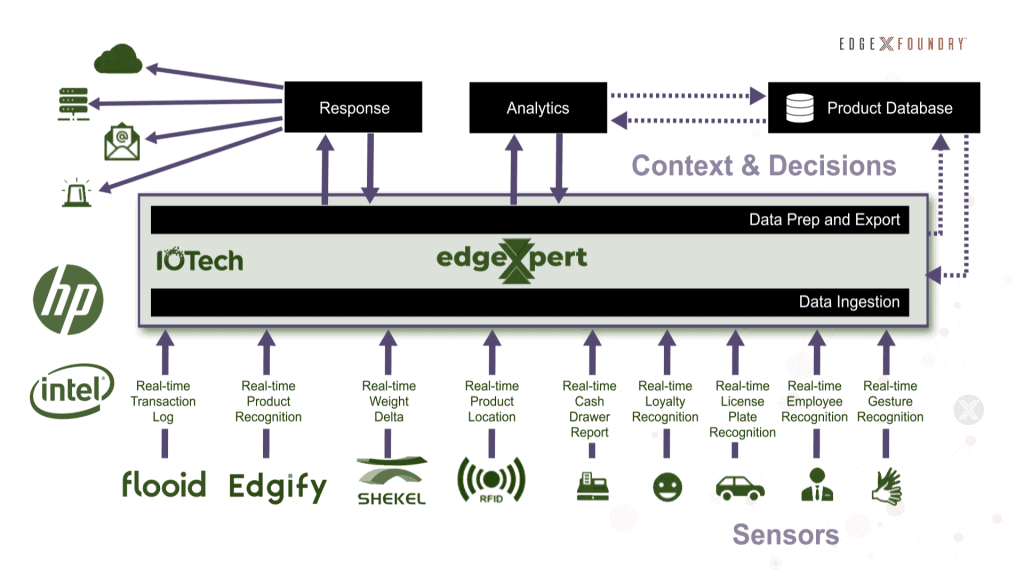
By leveraging open edge computing solutions, it is now possible to create data-driven retail solutions that augment existing assets rather than replace them.
Under pressure from the online marketplaces, in-store retail is emerging as an important vertical for new Internet of Things (IoT) solutions. IoT has already started to revolutionize the retail industry by delivering a growing range of benefits for both retailers and customers. It is now powering enhanced customer shopping experiences and enabling more efficient stores that directly impact the bottom line for the retailers.
See also: Why the Retail Industry Needs to Utilize the Power of Edge Computing
Retailers are realizing the importance of leveraging data at the edge. This is the key to unlocking a competitive advantage and delivering an instant, information-rich, frictionless in-store shopping experience. Customers have become accustomed to such an experience when purchasing online. IoT technologies enable advanced analytics to process store data near the retail devices and shoppers. This is fundamental to delivering solutions that can support the changing expectations of retail customers.
When applied to the retail sector, edge computing ensures that information processing, content collection, and data delivery are as near to customers and store operations as possible. With edge computing, retailers can take advantage of the integration of new IoT devices and data sources: video cameras, NVR systems, barcode readers, digital signage, and RFID. The benefits of introducing edge technology, combined with retail analytics using new artificial intelligence (AI) and machine learning (ML) algorithms, are significant.
Some of the new, innovative retail-focused use cases that the IoT and edge computing are enabling include:
- Loss prevention
- Asset tracking
- Inventory optimization
- Customer experience
- Staff effectiveness
- Smart supply chains
Retail considers risks
A major challenge, however, is determining how to use these new technologies in the most seamless and cost-effective way without disturbing current operations. It is also important to protect existing investments in both IT and OT equipment (e.g., scanners, weighing equipment, POS). Solutions must be able to scale, adapt, and keep pace in a fast-moving retail market. The retailers are reluctant to take the risk associated with building and maintaining custom solutions or being locked into proprietary vendor solutions.
Retail industry initiatives such as the Open Retail Initiative (ORI) – led by Intel and a number of major technology companies – are addressing this challenge. They are enabling retailers to unlock the power of data and insights within their businesses through the deployment of new edge solutions. These solutions are based on a common, open edge framework that enables an ecosystem of interchangeable components.
The ORI has specified the Linux Foundation’s EdgeX Foundry™ open-source framework as its reference IoT platform. EdgeX can enable the integration of a range of devices from multiple vendors that are added easily to a system, creating an integrated solution for retail. It can merge all the available data at the edge to create a single operational picture. This, in turn, can support multiple use cases using the same data sets.

For example, the solution can support loss prevention in a store to help combat both accidental and fraudulent behavior at a self-checkout. It does this by collecting device data in real-time from scanners and weighing equipment. This data combines with the results of AI algorithms, providing video camera inference to monitor the checkout. The aggregated data is then fed into the edge applications analyzing the data to capture events and report anomalies. An employee can automatically receive real-time notifications of any suspicious events. That allows the employee to take the required action without any interruption in the customer checkout.
These capabilities were illustrated successfully as part of the Open Retail Initiative Loss Prevention demonstration at NRF 2020, which coincided with the one-year anniversary of the ORI’s founding. Working together on a demo were six initiative members: Edgify, Flooid, Shekel, and LF Edge members HP, IOTech, and Intel. The demo, which was for the Intel booth, showcased the value of real-time sensor fusion for a loss prevention use case at self-checkout. Real-time data was aggregated through the EdgeX middleware from different common retail systems, including POS real-time transaction log, CV-based object detection, scale solution, and RFID. All of this was in a single pane of glass to illustrate how traditional integration roadblocks can be a thing of the past.
Summary
Edge computing is becoming increasingly important to in-store retailers as they try to compete with their online counterparts.
Open edge computing solutions such as those promoted by the ORI are key to enabling enhanced customer shopping experiences. At the same time, these solutions support the changing expectations of retail customers and enable more efficient stores for retailers.
Crucially, by leveraging open edge computing solutions, it is now possible to create data-driven retail solutions that augment existing assets rather than replace them.




























